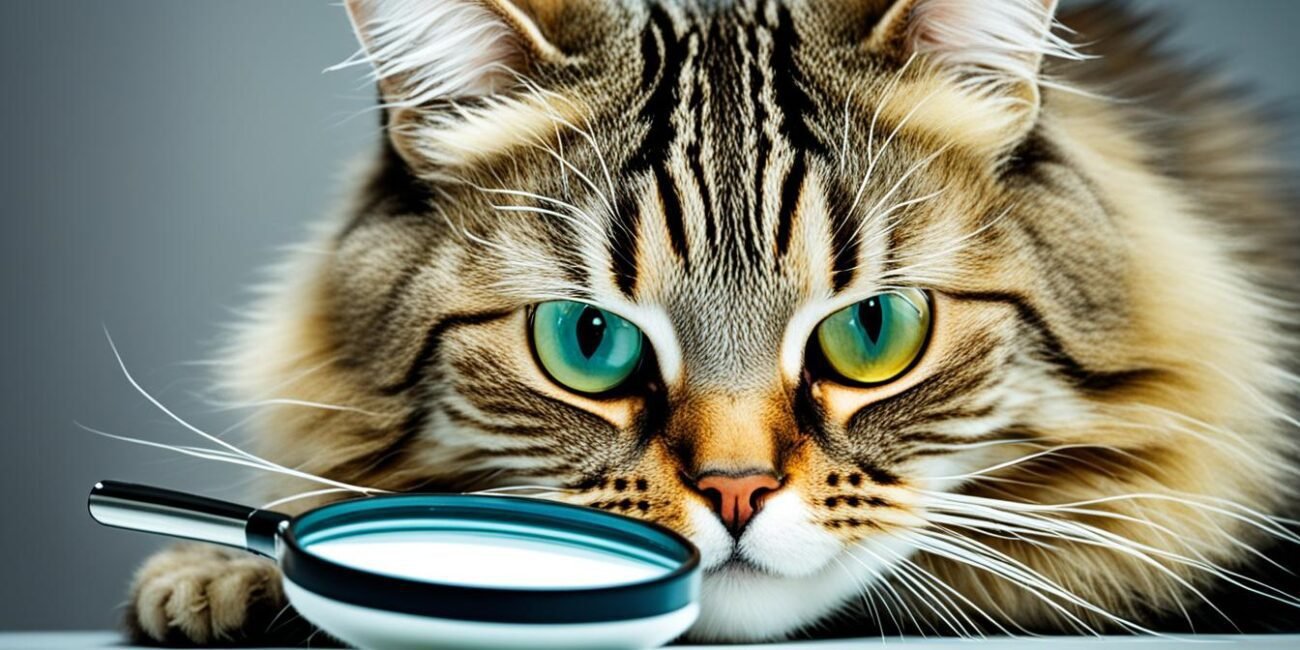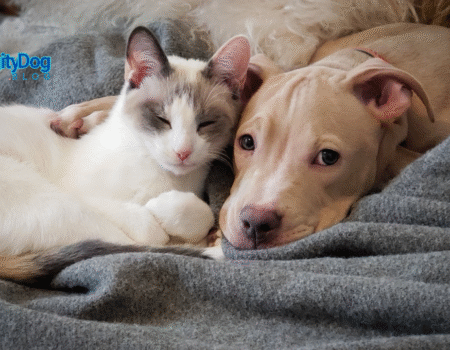As Albert Einstein once said, “The world as we have created it is a process of our thinking. It cannot be changed without changing our thinking.” Sup guys it’s J. V. founder of this awesome blog your reading.😀😀♥️✔️ This powerful quote reminds us that sometimes we need to challenge our past notions and approach things from a different looksy. When it comes to cat health, it’s important to think beyond the common pests like fleas and ticks and consider the possibility of lice infestation in our lil puddy tats.
Would y’all believe lice, though less common in cats than in some other animals, can still pose a threat to their well-being. These small insects infest the cat’s skin, causing symptoms such as excessive itchiness, hair loss, and a dry, scruffy-looking coat. But can cats actually get lice?
The answer is yes. Cats can indeed get lice, but fortunately, with the right knowledge and preventive measures, we can protect our furry companions from this pesky parasite. In this article, I will provide you with essential facts about lice infestation in cats, offer grooming tips to prevent lice from affecting your cat’s health, and explore treatment options recommended by vets. Check out this cool pic fam!!!
Key Takeaways:
- Cats can get lice, although it is less common than other parasites like fleas and ticks.
- Direct contact with infested cats or contaminated objects can transmit lice to cats.
- Common symptoms of lice infestation in cats include excessive itchiness, hair loss, and a dry, scruffy coat.
- Diagnosis of cat lice can be made by visually observing lice or their eggs (nits) in the cat’s hair.
- Treatment options include using shampoos, sprays, and insecticidal products recommended by a veterinarian.
Lice in Cats🙀🙀🙀
Lice are insects that can infest the skin of cats, causing various problems such as itchiness and hair loss. While not as common as fleas, lice can still be a concern for cat owners. Cats can acquire lice through direct contact with infested cats or by coming into contact with contaminated objects.
The most common species of lice that infests cats is Felicola subrostrata. Once infested, cats may show signs of lice infestation, including:
- Excessive itchiness
- A dry and scruffy coat
- Hair loss, particularly around the ears, neck, shoulders, groin, and rectal area
To diagnose cat lice, it is necessary to visually observe lice or their eggs (nits) in the cat’s hair. Lice appear as flat, six-legged insects without wings, while the nits look like small white dots attached to hair shafts.
Treating lice in cats requires various options, such as shampoos, sprays, and insecticidal products that are recommended by a veterinarian. These treatments are designed to kill both lice and their eggs. In some severe cases, shaving the cat’s fur may be necessary to reach deeper lice and their eggs.
| Treatment Options | Description |
|---|---|
| Shampoos | Specifically formulated to kill lice and soothe irritated skin |
| Sprays | Used to treat the cat’s living environment and prevent re-infestation |
| Insecticidal products | Available in various forms (e.g., topical solutions) to target lice infestations |
Can Cats Get Lice from Humans?
No sir!! Cats cannot get lice from humans, and humans cannot get lice from cats. Lice are species-specific parasites that only infest their own specific host. While lice can be transmitted between cats through direct contact or contaminated objects, they cannot move from one species to another. So, you don’t have to worry about getting lice from your beloved feline companion!
When it comes to preventing and controlling lice infestations in cats, it’s crucial to prioritize cat pest control practices. By maintaining a clean and hygienic environment for your cat, you can significantly reduce the risk of lice transmission. Regularly clean and disinfect your cat’s bedding, grooming utensils, and other objects they come into contact with. This helps eliminate any potential lice or eggs that may be present.
If you notice any signs of lice infestation in your cat, it’s essential to seek appropriate treatment. While there are commercial products available for treating cat lice, some cat owners prefer natural remedies for cat lice. It’s important to note that there is limited scientific evidence on the effectiveness of natural remedies for treating lice infestations in cats. Before using any natural remedies, consult with your vet fam..
“A great way preventing and treating lice in cats is to read, re-read and triple read this post if need be. It’s put together by people who know!!!!!” – J.V. Charles, Founder, Pet Lover and Author
Cat Pest Control Checklist
| Preventive Measures | Treatment Methods |
|---|---|
|
|
Signs and Symptoms of Cat Lice Infestation
Cats with lice infestation may exhibit signs and symptoms such as excessive itching, scratching, and irritation of the skin. Their coat may appear dry, scruffy, and may have areas of hair loss, particularly around the ears, neck, shoulders, groin, and rectal area.
It is important to keep an eye out for these signs and symptoms, as they can indicate a lice infestation in cats. Prompt diagnosis and treatment are necessary to alleviate the cat’s discomfort and prevent further complications.
Diagnosing Cat Lice
Look y’all when it comes to diagnosing cat lice, a careful visual inspection of the cat’s fur is key. Look for the presence of lice or their eggs, known as nits, in the cat’s hair. Adult lice are flat, six-legged insects without wings, while the nits appear as small white dots attached to hair shafts.
To accurately identify lice, pay close attention to the cat’s head and neck, as these areas are commonly affected. Check for any signs of movement or small white specks that could indicate lice infestation.
If you’re uncertain about the presence of lice or need a definitive diagnosis, it’s always best to consult a veterinarian. They can perform a thorough examination and use specialized tools to confirm the presence of lice. Veterinarians are experienced in identifying lice and can provide appropriate treatment options.
| Signs of Cat Lice Infestation | Detection Method |
|---|---|
| Excessive itching and scratching | Observation of cat’s behavior |
| Dry, scruffy-looking coat | Visual inspection of the cat’s fur |
| Hair loss, particularly around the head, neck, and ears | Close examination of affected areas |
Pro Tip:
While diagnosing cat lice can be done through visual inspection, it’s important to remember that some early infestations may not be easily detectable. If you suspect your cat has lice but are unable to find any evidence, consider consulting a veterinarian for a professional examination.
Treating Cat Lice
When it comes to treating cat lice, there are several options available that effectively eliminate these parasites. Shampoos, sprays, and insecticidal products are specifically designed to kill lice and their eggs, ensuring a thorough treatment. It is essential to follow the veterinarian’s recommendations closely, as some cats may have sensitivities to certain ingredients. In severe cases of lice infestation, shaving the cat’s fur may be necessary to access the deeper lice and their eggs. Ugggg😮😮
Regular grooming and maintaining good cat hygiene practices play a crucial role in preventing lice infestations. By removing any potential lice or eggs during grooming sessions, you can help keep your cat free from these pesky parasites. Additionally, practicing proper cat care, such as regularly cleaning and disinfecting bedding and grooming utensils, can help prevent lice transmission.
“Regular grooming and maintaining proper hygiene are great ideas to stop lice attacks in cats.” -J.V. Charles, Founder, Pet Lover and Author
To summarize, the treatment of cat lice involves using appropriate products to kill the lice and their eggs. It is important to follow the veterinarian’s instructions and recommendations for the best results. By incorporating regular grooming and maintaining good cat hygiene practices, you can effectively prevent lice infestations and keep your feline companion healthy and happy.
| Treatment Options | Description |
|---|---|
| Shampoos | Formulated to kill lice and their eggs when applied and left on the cat’s fur for a specified period. |
| Sprays | Designed to be sprayed directly on the cat’s fur, providing thorough coverage and targeted lice elimination. |
| Insecticidal Products | Available in various forms, such as powders or topical treatments, that effectively kill lice and prevent reinfestation. |
Preventing Lice in Cats
To prevent lice infestation in cats, maintaining good cat hygiene practices is crucial. Regular grooming, including brushing and combing the cat’s fur, helps detect and remove any lice or eggs. By keeping the cat’s living environment clean and free from lice, you can minimize the risk of infestation.
Here are some cat grooming tips for preventing lice:
- Brush and comb your cat’s fur regularly to remove any potential lice or eggs.
- Use a fine-toothed comb to catch any lice or nits that may be present.
- Keep your cat’s bedding clean by washing it regularly and disinfecting it to eliminate any lice.
- Disinfect grooming tools, litter boxes, and other objects your cat comes into contact with to prevent lice transmission.
Additionally, following recommended cat pest control measures can further reduce the risk of lice infestation. This may include using preventive products such as topical treatments or collars, as well as treating the cat’s living area with pet-safe insecticides.
By implementing these preventive measures, you can help protect your cat from lice infestation and ensure their overall health and well-being.
| Cat Grooming Tips for Preventing Lice |
|---|
| Regularly brush and comb your cat’s fur |
| Use a fine-toothed comb to catch any lice or nits |
| Keep your cat’s bedding clean by washing it regularly |
| Disinfect grooming tools and other objects your cat comes into contact with |
| Follow recommended cat pest control measures |
Natural Remedies for Cat Lice
While there are various commercial products available for treating cat lice, some cat owners may prefer natural remedies. However, it is important to note that there is limited scientific evidence on the effectiveness of natural remedies for treating lice infestations in cats.
Tea tree oil: Some cat owners have found success in using tea tree oil as a natural remedy for cat lice. It is believed to have insecticidal properties that can help eliminate lice. However, it is crucial to use tea tree oil in diluted form, as its concentrated form can be toxic to cats. Always consult a veterinarian before using any essential oils on your cat.
Lavender oil: Another natural remedy that cat owners may consider is lavender oil. Similar to tea tree oil, lavender oil is thought to have insecticidal properties. However, like any essential oil, it is essential to dilute it and consult with a veterinarian before application.
It is crucial to consult a veterinarian before using any natural remedies, as certain ingredients can be toxic to cats or may not be as effective as commercial products.
While natural remedies can be appealing, it is essential to prioritize the well-being and safety of your cat. A veterinarian can provide guidance on the most effective and safest treatment options for lice infestations in cats.
Remember, always consult a veterinarian for proper diagnosis and treatment of lice infestations in cats.
Conclusion
Lice infestations can be a common concern for cats, as they can cause discomfort and potentially lead to health complications. Thankfully, there are effective ways to control and prevent lice infestations in cats, ensuring their overall well-being. By prioritizing regular grooming and maintaining good cat hygiene practices, cat owners can significantly reduce the risk of lice infestations and keep their feline companions healthy.
It is crucial to follow recommended cat pest control measures, such as washing and disinfecting bedding and grooming utensils, to prevent lice transmission. Additionally, seeking professional advice from a veterinarian is essential if a cat is suspected of having lice. Veterinarians can provide an accurate diagnosis and recommend appropriate treatment options, including shampoos, sprays, or insecticidal products.
Preventing lice in cats is an ongoing commitment, but by taking proactive measures, cat owners can create a safe and comfortable environment for their furry friends. Regular check-ups with a veterinarian and staying informed about cat health concerns, including lice prevention, are key to ensuring the overall health and happiness of cats. Here’s some FAQs your gonna love. Hit me up in the comments below fam. Let’s talk kitty cats😻 -J.V.
FAQ
Can cats get lice?
Yes, cats can get lice. Lice are small insects that infest the skin of animals, including cats.
What are the signs of lice infestation in cats?
Signs of lice infestation in cats may include excessive itching, hair loss, and a dry, scruffy-looking coat.
How can I diagnose lice in my cat?
Lice infestations in cats can be diagnosed by visually observing lice or their eggs (nits) in the cat’s hair.
How can I treat lice in my cat?
Treatment options for lice in cats include using shampoos, sprays, and insecticidal products recommended by a veterinarian.
How can I prevent lice infestation in my cat?
Regular grooming, maintaining good cat hygiene practices, and following recommended cat pest control measures can help prevent lice infestations in cats.
Can cats get lice from humans?
No, cats cannot get lice from humans, and humans cannot get lice from cats. Lice are species-specific and only infest their own specific host.
Are there natural remedies for cat lice?
While some cat owners may prefer natural remedies for treating lice infestations in cats, it is important to consult a veterinarian for recommendations, as there is limited scientific evidence on the effectiveness of natural remedies.
What are the health concerns associated with cat lice infestations?
Lice infestations in cats can cause discomfort, excessive scratching, and potential complications if left untreated. Prompt diagnosis and treatment are necessary to alleviate the cat’s discomfort and prevent further complications.
Is cat lice infestation common?
Lice infestations in cats are not as common as other parasites, such as fleas, but they can still occur. Maintaining good cat hygiene practices and following recommended preventive measures can help reduce the risk of lice infestation.










No Comment! Be the first one.